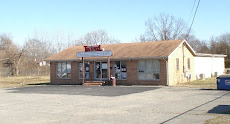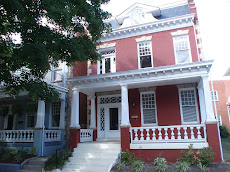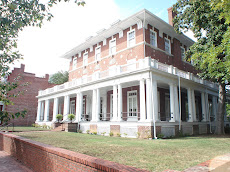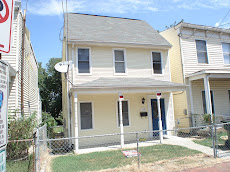SUMMARY OF THE CENTRAL VIRGINIA AREA HOUSING MARKET ANALYSIS
3rd Quarter 2011
National and Local Economic Overview
The national economy entered recession in late 2007 and officially came out of recession in
early summer 2009. The recovery since then has been less than robust. As of the third quarter
of 2011, the national economy continues to muddle and drift along with no real inclination for
growth. Each new release of economic forecasts seems to revise earlier forecasts lower. The
lack of stronger economic growth is also being felt in the Central Virginia region as well as
statewide.
The housing market nationally has also not recovered very well, as foreclosures and credit
availability continue to undermine market recovery and sales, which are remaining stubbornly
below normal levels. In all previous recessions of the last 50 years, the housing industry has
either led the recovery or made significant contributions to the recovery. But for the current
recovery, housing’s contribution is close to zero. In the Central Virginia region, the housing
market has fared somewhat better than nationally but recovery is slow. Overall, the national economy is growing very modestly and it does not yet feel like recovery,
which has caused some economists to pose the possibility of sliding back into recession. But a
number of positive measures suggest a second recession is unlikely. And while the equity
markets have been volatile in the third quarter, corporate earnings have been very positive and
many corporations are in an exceedingly high cash position. Resolution of the national debt and
budget political strife as well as European market woes would go a long way to spurring more
robust economic growth in the U.S. economy and real estate markets. Those factors are major
contributors to uncertainty for both businesses and consumers, and easing the uncertainty
would cause a return of some confidence and a return of spending.
Central Virginia’s economy showed signs of recovery in late 2010 and into the spring of 2011 as
the region’s job picture improved. But, the region entered a soft spot in the summer and that
has prevailed through the third quarter. On an annualized basis, the region is down 4,200 jobs
in 2011 (January-August), compared to the same period in 2010. These losses are small
compared to the middle of the recession, and it seems like recovery is just around the corner
but not quite yet happening.
The positive measures in the region’s economy are job growth in its two largest and highest
paying sectors. The Professional and Business Services Sector added 4,000 jobs and the
Health and Education Services sector added 1,200 jobs for the annual period of August 2010 to
August 2011. The other sectors have generally small losses cumulatively, resulting in an overall
net loss as the third quarter comes to a close.
Central Virginia Area Housing Market
The housing market in Central Virginia continues to be stubbornly slow. While sales activity has
picked up somewhat in 2011, prices continue to decline across the region. The major driver of
the price declines is the inventory of foreclosures on the market. Until these homes are sold,
there will be little upward pressure on prices. Underlying fundamentals—including population
growth and historically low interest rates— suggest that the housing market will improve, though
the pace of improvement will likely remain modest and will depend on the drawdown of the
foreclosure inventory.
Home Sales and Prices
In the third quarter of 2011, there was a total of 3,033 home sales in the Central Virginia MLS
reflecting an increase of 23 percent over the third quarter of 2010. Sales were up across the
board in the Richmond Metro Area while sales activity was down slightly in the Tri Cities area.
This uptick in sales is a reversal of the second quarter when sales were down. (However, the
second quarter sales figures for 2011 were being compared to the second quarter of 2010 w
there was substantial sales activity associated with the end of the Federal homebuyers’ tax
credit.) An increase in sales is an important indicator that there is demand for homes and that
some of the more moderately prices and distressed properties are being removed from the
inventory. Continued improvement in the number of sales is critical for eventual price
appreciation in the region.
While the number of sales was up across most of the region, prices continued to fall. The
average price of a home sold in the CVR MLS in the third quarter of 2011 was $223,499, down
seven percent from the 2010 third quarter average. The median sales price in the third quarter
of 2011 was $188,000, down eight percent from the third quarter 2010 median. The trends in
prices were similar in the Richmond Metro and Tri Cities area, though Tri Cities experienced
somewhat steeper price declines. The cities of Richmond and Petersburg were notable for
experiencing moderate increases in median prices in the third quarter of 2011.
Pending Sales
In the third quarter of 2011, there were 3,093 pending sales, up 11 percent over the third quarter
of 2010. The number of pending sales was especially strong in the Richmond Metro area where
the number of pending sales increased by 14 percent in the third quarter of 2011 compared with
the third quarter of 2010. The Tri Cities area continues to struggle, in sales, in prices and also
in pending sales, which suggests that stabilization and recovery in the Tri Cities area, with the
possible exception of the City of Petersburg, is coming very slowly.
Active Listings
The number of active listings in the Central Virginia region is down 25 percent in the third
quarter of 2011 compared with the third quarter of 2010. While a negative trend in active
listings typically suggests a drawn down in inventory, leading to price increases, it is likely that
this trend is keeping potential sellers off the market. The level of inventory was down 27
percent in the Richmond Metro area and down 22 percent in the Tri Cities area.
Outlook for 2011
The Central Virginia housing market continues to be sluggish. Many of the fundamentals
needed for recovery are present—population growth, economic stability, low household
formation rates, historically low interest rates, and low prices. But, several obstacles remain.
The main roadblocks to recovery are the foreclosure inventory and uncertainty on the part of
buyers and sellers. The positive economic signs, if they continue, should improve consumer
and business confidence. The major banks have resumed processing foreclosures, which will
initially create an uptick in the number of foreclosures. But the resumed process will provide
more certainty about the level of foreclosure activity. Next spring will be critical for assessing
the sales of distressed properties and the recovery of the housing market.
Posted from RAR













































